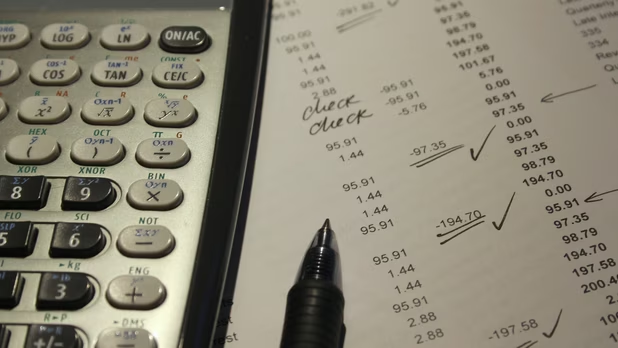Understanding Connecticut Tax Refunds
Connecticut tax refunds are an essential aspect of the state’s tax system, providing residents with a return of excess taxes paid throughout the year. These refunds can be a significant financial boost for many individuals and families, helping to cover various expenses or contribute to savings. The process of obtaining a tax refund in Connecticut involves several steps, including filing a tax return, verifying income and deductions, and waiting for the refund to be processed. Understanding the intricacies of this process can help taxpayers maximize their refunds and avoid common pitfalls.
One of the key factors in determining the amount of a tax refund is the taxpayer’s income level. Higher income levels typically result in higher tax liabilities, but they can also lead to larger refunds if the taxpayer has overpaid throughout the year. Additionally, various deductions and credits can significantly impact the refund amount. For example, deductions for mortgage interest, property taxes, and charitable contributions can reduce taxable income and increase the refund. Credits, such as the Earned Income Tax Credit (EITC), can also provide substantial refunds for eligible taxpayers.
Another important aspect of Connecticut tax refunds is the timing of the refund. The Connecticut Department of Revenue Services (DRS) processes refunds on a first-come, first-served basis, meaning that taxpayers who file their returns early are likely to receive their refunds sooner. However, the processing time can vary depending on several factors, including the complexity of the return and the accuracy of the information provided. Taxpayers can check the status of their refunds online through the DRS website, providing them with up-to-date information on when they can expect to receive their money.
Eligibility for Connecticut Tax Refunds
Eligibility for Connecticut tax refunds depends on several factors, including residency status, income level, and tax filing status. Residents of Connecticut who have paid more in state taxes than they owe are generally eligible for a refund. Non-residents and part-year residents may also be eligible for refunds if they have paid Connecticut taxes on income earned within the state. It’s important for taxpayers to accurately report their residency status and income to ensure they receive the correct refund amount.
Income level plays a crucial role in determining eligibility for tax refunds. Taxpayers with higher incomes may have more opportunities to claim deductions and credits, which can increase their refund amounts. Conversely, lower-income taxpayers may be eligible for specific credits, such as the EITC, which can provide significant refunds. It’s essential for taxpayers to understand the various deductions and credits available to them and to accurately report their income to maximize their refunds.
Tax filing status is another important factor in determining eligibility for Connecticut tax refunds. Single filers, married couples filing jointly, and heads of household may have different eligibility criteria and refund amounts. For example, married couples filing jointly may be eligible for higher refund amounts due to combined income and deductions. Taxpayers should carefully consider their filing status and consult with a tax professional if they have questions about their eligibility for refunds.
Common Deductions and Credits
Several common deductions and credits can significantly impact the amount of a Connecticut tax refund. Deductions reduce taxable income, while credits directly reduce the amount of tax owed. Understanding these deductions and credits can help taxpayers maximize their refunds and reduce their overall tax liability.
| Type | Description |
|---|---|
| Mortgage Interest Deduction | Deduct the interest paid on your mortgage, reducing taxable income. |
| Property Tax Deduction | Deduct the amount paid in property taxes from your taxable income. |
| Charitable Contributions | Deduct donations made to charitable organizations. |
| Earned Income Tax Credit (EITC) | A refundable credit for lower-income taxpayers. |
| Child Tax Credit | A credit for taxpayers with qualifying children. |
| Education Credit | A credit for eligible education expenses. |
One of the most common deductions is the mortgage interest deduction. Homeowners can deduct the interest paid on their mortgage, reducing their taxable income and potentially increasing their refund. Property tax deductions are another common deduction, allowing taxpayers to deduct the amount paid in property taxes from their taxable income. Charitable contributions are also deductible, providing an incentive for taxpayers to donate to charitable organizations.
In addition to deductions, several credits can significantly impact the amount of a tax refund. The EITC is one of the most substantial credits available to lower-income taxpayers, providing a refundable credit that can result in a significant refund. Other credits, such as the Child Tax Credit and the Education Credit, can also provide substantial refunds for eligible taxpayers. It’s important for taxpayers to understand the eligibility criteria for these credits and to accurately report their income and expenses to claim them.
Filing for Connecticut Tax Refunds
Filing for a Connecticut tax refund involves several steps, including gathering necessary documents, completing the tax return, and submitting it to the DRS. Taxpayers should ensure they have all required documents, such as W-2 forms, 1099 forms, and receipts for deductions and credits. Accurate record-keeping is essential to ensure the tax return is completed correctly and to avoid delays in processing the refund.
- Gather necessary documents such as W-2 forms, 1099 forms, and receipts for deductions and credits.
- Complete the tax return accurately, reviewing income, deductions, and credits.
- Submit the tax return to the DRS either electronically or by mail.
- Check the status of the refund online through the DRS website.
- Receive the refund by direct deposit, paper check, or prepaid debit card.
Completing the tax return accurately is crucial for obtaining a refund. Taxpayers should carefully review their income, deductions, and credits to ensure they are reported correctly. Errors or omissions can result in delays or even denial of the refund. Taxpayers may choose to use tax preparation software or consult with a tax professional to ensure their return is completed accurately.
Once the tax return is completed, it must be submitted to the DRS for processing. Taxpayers can file their returns electronically or by mail. Electronic filing is generally faster and more secure, allowing taxpayers to receive their refunds more quickly. After submitting the return, taxpayers can check the status of their refund online through the DRS website. It’s important to keep a copy of the tax return and all supporting documents for future reference.
Processing and Receiving Refunds
The processing time for Connecticut tax refunds can vary depending on several factors, including the complexity of the return and the accuracy of the information provided. The DRS processes refunds on a first-come, first-served basis, meaning that taxpayers who file their returns early are likely to receive their refunds sooner. However, the processing time can be longer during peak filing periods, such as the weeks leading up to the tax filing deadline.
Taxpayers can check the status of their refunds online through the DRS website. This online tool provides up-to-date information on the status of the refund, including whether it has been processed and when it is expected to be issued. Taxpayers will need to provide their Social Security number and the exact amount of the refund to check the status.
Once the refund is processed, it can be issued in several ways. Taxpayers can choose to receive their refund by direct deposit, paper check, or prepaid debit card. Direct deposit is generally the fastest and most secure method, allowing taxpayers to receive their refunds directly into their bank accounts. Paper checks and prepaid debit cards may take longer to arrive but provide alternative options for receiving the refund.
Common Issues and Solutions
Several common issues can arise during the process of obtaining a Connecticut tax refund. One of the most common issues is errors or omissions on the tax return. These errors can result in delays or even denial of the refund. Taxpayers should carefully review their returns for accuracy and ensure all required information is provided. Using tax preparation software or consulting with a tax professional can help reduce the risk of errors.
Another common issue is delays in processing the refund. The DRS processes refunds on a first-come, first-served basis, meaning that taxpayers who file their returns early are likely to receive their refunds sooner. However, processing times can be longer during peak filing periods. Taxpayers can check the status of their refunds online through the DRS website to get up-to-date information on when they can expect to receive their money.
In some cases, taxpayers may receive a smaller refund than expected or no refund at all. This can occur if there are discrepancies between the information provided on the tax return and the information the DRS has on file. Taxpayers should ensure all information is accurate and consistent to avoid these issues. If a discrepancy is identified, taxpayers may need to provide additional documentation or clarification to resolve the issue.
Maximizing Your Connecticut Tax Refund
Maximizing your Connecticut tax refund involves several strategies, including accurately reporting income, claiming all eligible deductions and credits, and filing your return early. Accurate record-keeping is essential to ensure all income, deductions, and credits are reported correctly. Taxpayers should keep copies of all relevant documents, such as W-2 forms, 1099 forms, and receipts for deductions and credits.
Claiming all eligible deductions and credits can significantly increase the amount of your refund. Taxpayers should be aware of the various deductions and credits available to them and ensure they meet the eligibility criteria. Common deductions include mortgage interest, property taxes, and charitable contributions. Common credits include the EITC, Child Tax Credit, and Education Credit.
Filing your return early can also help maximize your refund. The DRS processes refunds on a first-come, first-served basis, meaning that taxpayers who file their returns early are likely to receive their refunds sooner. Filing early can also help avoid delays and reduce the risk of errors. Taxpayers can use tax preparation software or consult with a tax professional to ensure their return is completed accurately and filed on time.
Conclusion
Connecticut tax refunds provide a valuable financial boost for many residents, helping to cover expenses or contribute to savings. Understanding the process of obtaining a tax refund, including eligibility criteria, common deductions and credits, and filing requirements, can help taxpayers maximize their refunds and avoid common issues. Accurate record-keeping, careful review of the tax return, and filing early are essential strategies for ensuring a smooth and successful refund process.
Evaluation of IQTaxHub
Pros
Cons

August 2, 2024 at 2:03 p.m.
September 19, 2024 at 3:44 p.m.

